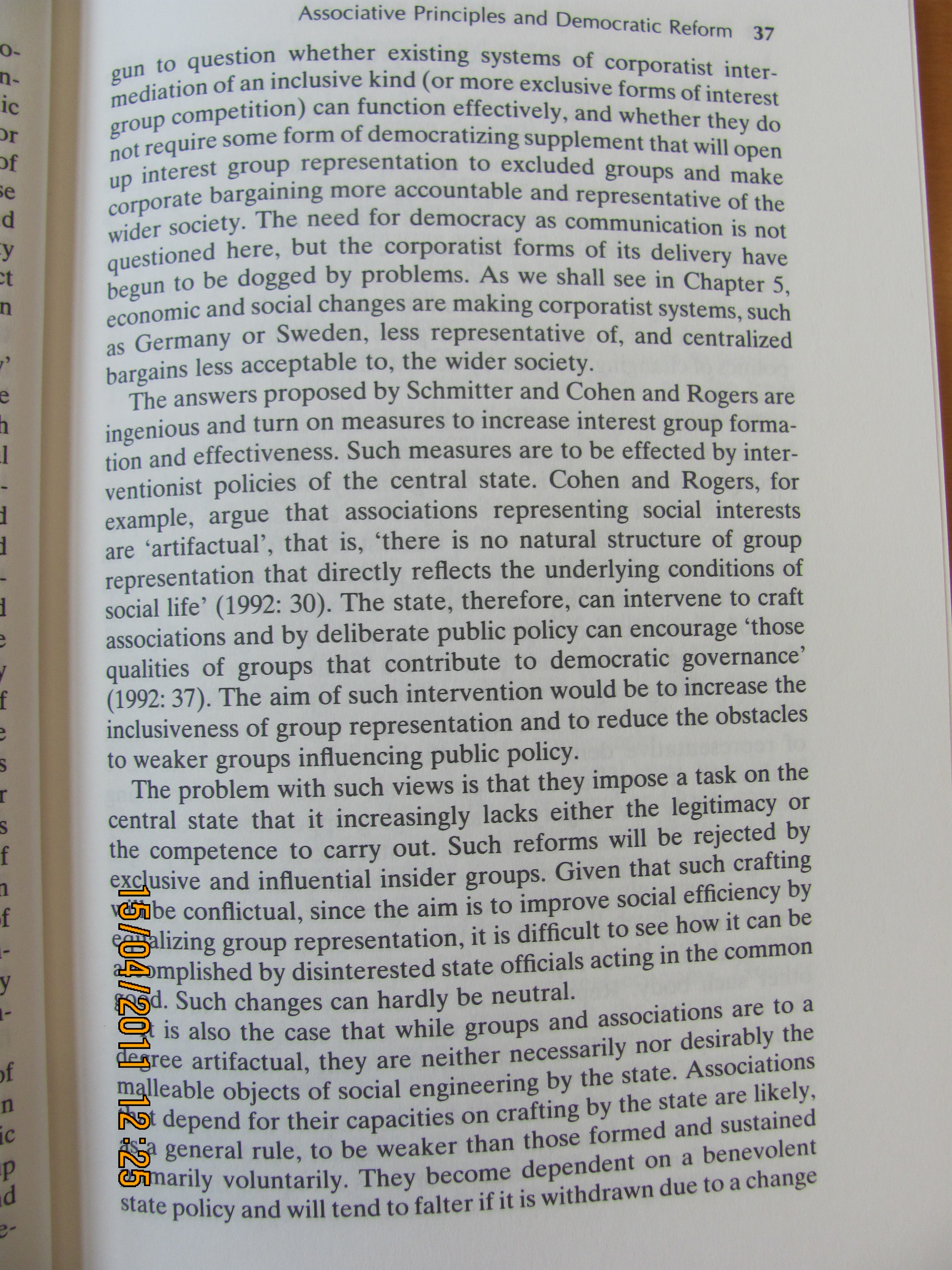45747 IMG#25

Associative Principles and Oemocratic Reform 37
CK
I gun to question whether existing systems of corporatist inter-I mediation of an inclusive kind (or morę exclusive forms of interest jjB^B group competition) can function effectively, and whether they do not require some form of democratizing supplement that will open « up interest group representation to excluded groups and make corporate bargaining morę accountable and representative of the wider society. The need for democracy as communication is not ąuestioned here, but the corporatist forms of its delivery have ■■ begun to be dogged by problems. As we shall see in Chapter 5,
| economic and social changes are making corporatist systems, such r* ■ as Germany or Sweden, less representative of, and centralized H bargains less acceptable to, the wider society.
The answers proposed by Schmitter and Cohen and Rogers are I ingenious and tum on measures to increase interest group forma-tion and effectiveness. Such measures are to be effected by inter-■■ ventionist policies of the central State. Cohen and Rogers, for example, argue that associations representing social interests are ‘artifactual’, that is, ‘there is no natural structure of group representation that directly reflects the underlying conditions of ^^^B social life’ (1992: 30). The State, therefore, can intervene to craft associations and by deliberate public policy can encourage ‘those fil ąualities of groups that contribute to democratic governance’ wH (1992:37). The aim of such intervention would be to increase the inclusiveness of group representation and to reduce the obstacles i li to weaker groups influencing public policy.
The problem with such views is that they impose a task on the central State that it increasingly lacks either the legitimacy or ^^^B the competence to carry out. Such reforms will be rejected by exc(usive and influential insider groups. Given that such crafting M^Sdbe conflictual, sińce the aim is to improve social efficiency by ^||jalizing group representation, it is difficult to see how it can be a^smplished by disinterested State officials acting in the common Such changes can hardly be neutral.
is also the case that while groups and associations are to a f Pjree artifactual, they are neither necessarily nor desirably the
mlleable objects of social engineering by the State. Associations jpsljt depend for their capacities on crafting by the State are likely, generał rule, to be weaker than those formed and sustained ®jnarily voluntarily. They become dependent on a benevolent td ■ State policy and will tend to falter if it is withdrawn due to a change
Wyszukiwarka
Podobne podstrony:
61970 IMG#06 18 Associative Principles and Oemocratic Reform Such developments were eminently possib
IMG#03 Associative Principles and Democratic ReformNew times for an old idea Associationalism is not
IMG#21 Associative Principles and Democratic Reform 33 legislative and regulative agency; a public p
IMG#31 Associative Principles and Democratic Reform 43 actualities. Whether associationalism can act
IMG#09 Associative Principles and Democratic Reform 21 We now tum to examine how associationalist an
IMG#11 Associative Principles and Democratic Reform 23 corporations, and if the great bulk of other
IMG#10 22 Associative Principles and Democratic Reform public power and of the devolved associationa
IMG#18 30 Associative Principles and Democratic Reform gain the upper hand and impose their view on
więcej podobnych podstron